This essay was originally published in 2019 as part of our five-week Monsters & Mommis miniseries celebrating queer horror. It’s being re-published to celebrate the Criterion release of Mark Robson’s The Seventh Victim (1943) — released as a double feature with Jacques Tourneur’s I Walked with a Zombie (1943). The release includes multiple commentaries and the documentary, Shadows in the Dark: The Val Lewton Legacy (2005).
The real horror is straight people.
Like many young cinephiles, my understanding of film history was framed by noted heterosexual filmmaker Martin Scorsese. Known for masterworks like Taxi Driver and Raging Bull, as well as some pretty good Leonardo DiCaprio movies, Scorsese has also been one of the most influential film historians of the last few decades. His enthusiasm is infectious and his documentaries A Personal Journey Through American Movies and My Voyage to Italy influenced me more than film school. Scorsese’s favorites became my favorites, and many remain to this day.
One of Scorsese’s heroes is producer Val Lewton. He gets a dedicated segment in A Personal Journey and Scorsese made an entire separate feature documentary all about him. One could argue nobody was more influential to the genres of horror, suspense, and thriller than Lewton. (Yes, not even Hitchcock.) Made with incredibly low budgets, Lewton and his collaborators discovered that limitations can lead to creative solutions. The fears we imagine are greater than anything we can see.
Scorsese spends a lot of time on these technical achievements. He talks about the way these films portray the psychology of terror. He touches upon the films as a metaphor for the immigrant experience. And he celebrates one of Lewton’s collaborators, director Jacques Tourneur. But missing in all this enthusiasm is another obvious thread of subtext. Missing is Lewton’s frequent screenwriter DeWitt Bodeen. Missing is the fact that Lewton’s best movies were gay.
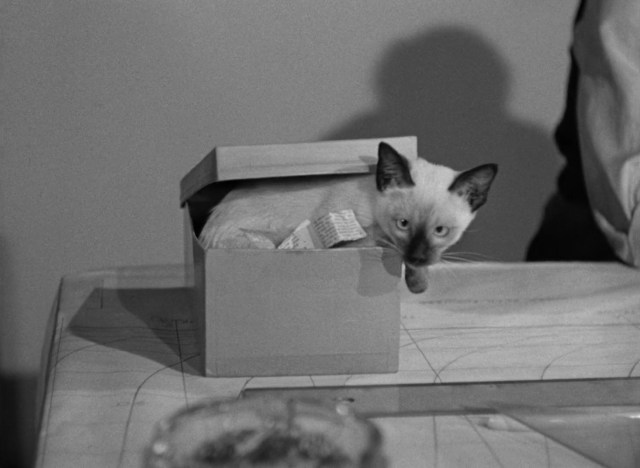
His first movie was called Cat People for gosh sake!
DeWitt Bodeen was a gay screenwriter and he wrote Val Lewton’s two best films, Cat People and The Seventh Victim. Made just a year apart, these two films complement each other. Despite having different directors, they’re formally similar. They have some of the same actors, some of the same character dynamics, and even share at least one character who seems to exist in both universes. They’re also both tragic explorations of shame and queer desire.
Cat People begins with, well, a cat. A panther anyway. Serbian immigrant Irena Dubrovna is drawing it at the zoo. She seems simple, content. And then she meets a man.
Oliver Reed approaches Irena and then walks with her when she leaves. They arrive at her apartment and she invites him in for tea. As they chat, and she shares the Serbian legend of the cat people that will haunt the rest of the film, it’s unclear how she feels about Oliver. She’s all smiles, but Oliver seems to just happen to her. Her detachment becomes sad. Her smiles become lonely. Maybe it’s less that she wants Oliver, and more that she wants someone. “You might be my first real friend,” she says to him.
The stilted awkwardness of their moments together are in sharp contrast with scenes of Oliver and his coworker, Alice. They chat and flirt and seem to have a real connection. It feels natural. It’s easy.
But Oliver has fallen for Irena. He tells her he loves her but mentions it’s weird that they haven’t kissed yet. He says in America when people are in love they kiss. She believes if she were to kiss him, if she were to open up her feelings, then she’d turn into a cat and kill him. She talks of something evil inside her, an impulse she can’t control. They postpone the kiss. And instead, of course, get married.
At their engagement party, another Serbian woman approaches their table and calls Irena sister. Irena is deeply troubled. The moment reads like a queer person being clocked. No one else at the party fully understands what just happened, but Irena is pulled out of her temporary fantasy. Her otherness has been underlined.

Irena and Alice never kiss but they do share gay looks
The rest of the film follows Irena as she fights her desires, and Oliver and Alice as they don’t fight theirs. Alice tells Oliver she’s in love with him. And Oliver tells Alice that until he met Irena he’d never been unhappy before. He longs to return to his cocoon of privilege. He longs for Alice.
It’s easy to read queerness into Irena’s refusal to sleep with her husband, but that’s an oversimplification of her struggle. She does not resist Oliver due to a lack of desire. She resists because she knows she is different and she knows her sexuality is wrong. Alice, however, is normal and she can love Oliver with ease. Oliver then represents both forbidden queer love and acceptable straight love. Irena is both an expression of denied female desire and a representation of Bodeen’s male gayness. He too was denied the simplicity that occurs when straight women fell for the men he loved.
The horror is also two-sided. Alice believes she is being stalked by Irena in panther form and moments of Alice walking down a dark street or being cornered in a swimming pool are iconic. But Irena’s internal struggle is just as frightening. When Irena’s psychiatrist, Dr. Judd, leans in close and tells her it’s all in her head and she should kiss him to prove it, we again see her faced with a split between her desires and what she’s told to desire. She tells Dr. Judd that she does not want to kiss him. She wants to kiss Oliver.
This moment inspires her to take a chance and do just that. But it’s too late. Oliver tells her he’s decided to be with Alice. “Believe me. It’s better this way,” he says. “Better? For whom?” she replies.
As if that weren’t bad enough, Oliver, Alice, and Dr. Judd decide to lock her in an institution. But Judd wants one more chance to help her first. What he really wants is another chance to force himself on her. He kisses her and she receives it coldly. And then, for the first time in the film, her transformation is confirmed. She turns into a panther and she mauls him.
Oliver gone, and horrified by her own ferocity, Irena goes back to the zoo. She opens the panther’s cage, and lets it maul her in return.
Oliver and Alice are free to live heterolly-ever-after. Good for them.
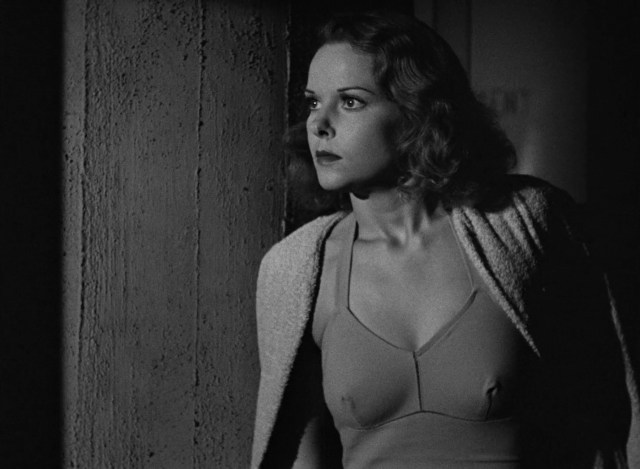
Alice has what every woman wants: a bathing suit with visible nipples
The Seventh Victim is an even stranger and messier film than Cat People. It’s a horror film with the convoluted plot of a noir. There are so many characters, so many plot points, so many twists. One of the film’s greatest shocks is that it’s only 70 minutes.
We’re introduced to Mary as a student at a boarding school. Her older sister, Jacqueline, has disappeared and stopped paying tuition and the headmistress offers to fly her to New York City to investigate. One of the teachers approaches Mary outside. She tells her that whether or not she finds her sister, she must never return to the school. The teacher left once but came back out of fear. “You have to have courage to live in the world,” she says. This is the first moment that feels coded as queer.
Upon arriving in New York, Mary learns that her sister has sold her hair salon. She learns that she rented a room in a hotel, but is never there, the room empty except for a chair and a noose. She learns that her sister has married a man named Gregory who doesn’t know where she is. But he can explain the noose. He says that Jacqueline always said life wasn’t worth living if you couldn’t end it.
Mary teams up with a private investigator but this ends in murder and she’s left frightened and even more lost. She tries to forget. She builds a life in New York and moves on. Then a man shows up at the school where she’s started working and says he knows where Jacqueline is hiding. This man is Cat People’s Dr. Judd.
Jacqueline appears only for a moment before disappearing once again. She’s striking, dark hair cut with short bangs, a vampiric femme fatale. She says nothing.
During this moment, the receptor of Bodeen’s queerness switches between sisters. Mary meets a young male poet eager to help solve the mystery of Jacqueline, and her flirtations with Gregory escalate. But at a party, attended by Dr. Judd, a woman explicitly confirms Jacqueline’s queerness, and her own. “Know her? We were intimate! Times we used to have together. I bet she never told you about that you’re too young.”
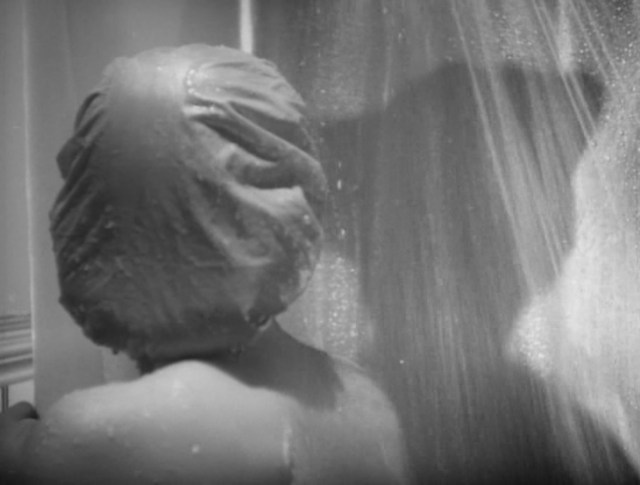
Sidenote: Hitchcock stole the Psycho shower scene from this movie
Mary and her ever-growing crew of amateur investigators discover that this woman, and the new owner of the salon, and most of the attendees of that party, are devil worshippers. Jacqueline was a devil worshipper too, but has changed her mind. The rest of the group views this as a betrayal and believes she must die.
Judd explains that Jacqueline was simply unhappy and latched onto this movement, only to realize they were not her cure. The group echo this sentiment after kidnapping Jacqueline and encouraging her to drink poison. They tell her she always talked of killing herself so it should be easy for her to do it now.
With the repetition of the character Dr. Judd and the groups’ brainwashing, there are echoes of conversion therapy and the medical establishment’s crusade against homosexuality.
And yet like in Cat People, the metaphor is not so simple. “Who’s to believe what is wrong and what is right?” one of the devil worshippers says. “What proof can you bring that good is better than evil?” This moment seems to imply they’re actually the gay ones. They’re creating new values and Jacqueline’s self-hatred prevented her from embracing this new truth.
Jacqueline is allowed to escape and flees to her hotel room. These moments are even more frightening than the stalking scenes in Cat People. Everyone is a potential threat to Jacqueline, including herself.
She finally makes it home and she meets her neighbor. This woman is played by the same actress as the other Serbian woman in Cat People. She tells Jacqueline that she’s ill and nearing the end. But she’s done embracing death. She’s going to go out and live, pretend as if she’s healthy, pretend as if she’s normal.
While Jacqueline was being very nearly murdered and stalked on the streets, Mary and Gregory were getting closer and closer. They finally confess this love to each other, but Mary explains that she has to resist because she could never betray her sister.
Back at the hotel, the sick woman leaves her room wearing a party dress. We hear a chair fall and a rope pull taut. The woman pauses for just a moment before walking down the stairs. We’re haunted by the knowledge of what Jacqueline has likely done.
Once again, the other removes herself. The straights get a happy ending.
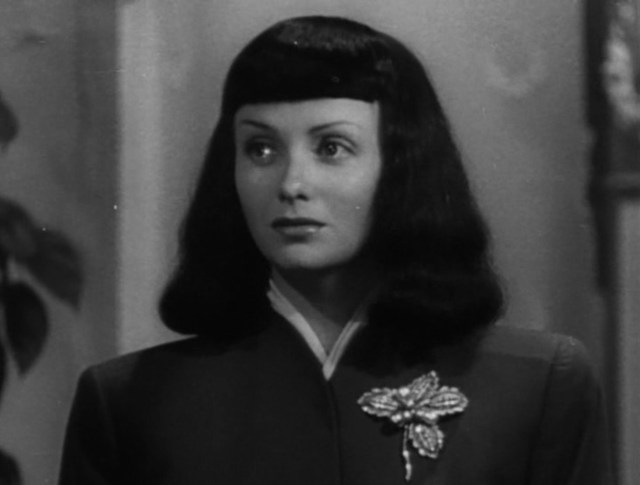
I like Jacqueline’s TERF bangs and I’m not ashamed to admit it
Horror is my favorite genre, because it can take the worst elements of our world and make them fun. We succumb to manufactured fear, and, for a moment, let go of our own. It’s true that both of these movies end in suicide. But neither film can so neatly be tied into the trope of the tragic lesbian. Both films, I promise, are very fun.
Yes, they’re suspenseful, and creative, and just the right amount of unreal. But their thematic obscurity also allows for a certain thoughtful disconnect. Within the moral and narrative ambiguity, you can feel Bodeen grappling with his homosexuality. It’s not a case where the villains are straight and the victims are gay. It’s not a case where the villains are gay, reclaiming our power. Instead, we’re both. These films represent the psychological interiority of a queer person questioning their feelings and their shame. They show someone who is conflicted and sad, strong and certain.
The queer women of Val Lewton and DeWitt Bodeen’s work aren’t really queer women at all, at least not in a cisnormative sense. Bodeen is using women to represent his feminine side, so they are in a sense gay men performed by women. There’s something so complex and, dare I say, genderqueer about this expression.
But I wouldn’t expect Martin Scorsese to understand any of this. To him, to them, we’ll remain lost in the shadows.
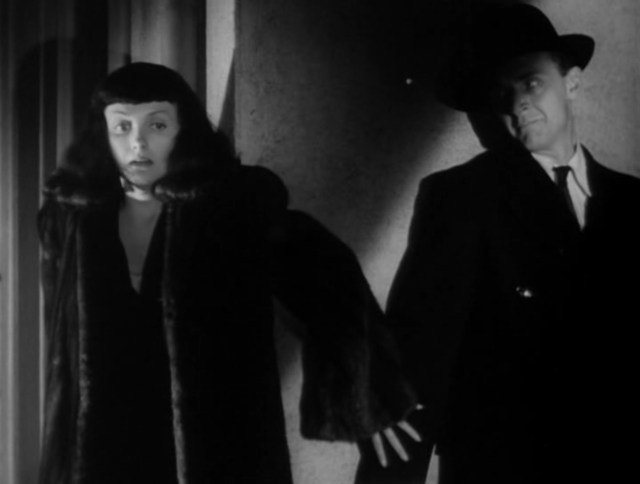
Val Lewton says “Gay Rights!”
The Seventh Victim is now available on the Criterion Collection. Cat People is also available on the Criterion Collection.



Hey! You reposted and my comment went missing!
I was just suggesting you do a quick short titled “The real horror is straight people”
Just stating facts, ya know?
I was scanning the news and saw an article about something (presumably straight) called an “Aaron Carter Face Tattoo ” and maybe choke screamed a little bit, so yes true facts
Aaron Carter is bisexual so I regret to inform you his face tattoo is now queer culture. lol
DAMMIT AARON CARTER you fooled me and you spooked me and you broke my heart
What would his mother say
whoa I really like this interpretation. like the idea of using women to explore his feminine side and the whole universe, rather than one character, representing a psychological interior…it’s just really good creative material to explore/ draw inspiration from. maybe I should read more film theory haha. I’ve really enjoyed all your film analysis’ btw!
Thank you!! And I think you should! As far as I’m concerned, reading film theory should be as enjoyable as the actual watching. There’s so much good writing out there that isn’t the dry, dull approach one might expect.
I think the title alone is a give away it might be a queer flix. Being a cat person is queer culture.
Being a cat person and now Aaron Carter’s freakin’ face tattoo are queer culture. sigh. At least my cats love me.
Hitting me where I live damn it, watching Cat People at different ages with changing perspectives had a different impact each time with the special dimension of being rather cat faced with a nose that starts sharpish and straight like the Sestra but ends in rounder cuter tip like poor doomed Irena.
When you’re like 12 you wonder what it means about you and if means you too are somehow doomed, oh and btw Sestra is played by Elizabeth Russell if any body wants to bask in pretty pictures of her.
Thanks for sharing. I’ve also returned to this film many times over the years getting something a little different each time.
Drew I always look forward to your reviews! I just want to say that the first time I watched the seventh victim I asked my partner if they thought I could pull off Jacquelines haircut. They responded with silence and suggested maybe I talk a hairstylist about this first… I did not end up getting that haircut. As for Cat People I ended up sobbing at the ending. At the time I couldn’t describe why it made me so upset and none of my straight cis film bro friends had that reaction. So I just thought I was weird.
I love both of these anecdotes. Thank you for sharing. <3
I was slightly disappointed you didn’t include either of these films (two of my favorites of all time) in your Thirsty Classics series. I should have known you were saving them for something special! Excellent work as always, Drew!
I love horror so much and there are so many queer horror movies out there I had to limit how many I choose for Thirsty Classics… but not this month!!
Drew, you are such an amazing writer and reviewer! I love your Thirsty Classics series and all your pieces on classics because I get to learn so much from you. Thanks a lot!
Great article as usual Drew.
Something interesting I discovered about Tom Conway the actor who played Dr. Judd in both movies (which is a bit confusing since he died at the end of the first one!). If he seems similar to George Sanders it because Sanders is his real life brother. You might remember him as the creepy brother in-law from Rebecca that you reviewed earlier. Sanders was also in All About Eve and the Picture of Dorian Grey both of which have been noted for queer subtext.
Ok I’m glad Cat People is coming up because my wife and I like to hiss “SISTERRRR” at opportune moments